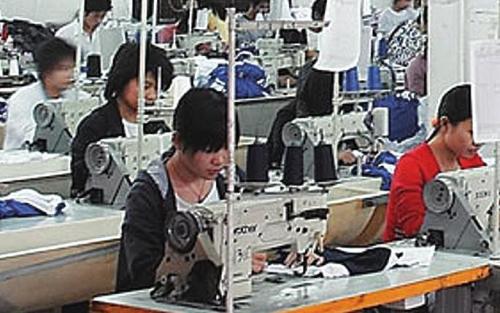 In 2012, the output, sales revenue and profit of non-woven fabrics enterprises above designated size in China increased by 23.31%, 19.74% and 18.28% respectively, and the profit rate reached 5.51%. Non-woven fabrics exported 485,000 tons throughout the year and exported 1.62 billion US dollars, an increase of 7.36% and 9.76%, respectively. A key enterprise in the industry has strengthened its internal management, adjusted its product structure, and actively explored the domestic market. Sales revenue has maintained a 33% growth in the case of declining exports.
In 2012, the output, sales revenue and profit of non-woven fabrics enterprises above designated size in China increased by 23.31%, 19.74% and 18.28% respectively, and the profit rate reached 5.51%. Non-woven fabrics exported 485,000 tons throughout the year and exported 1.62 billion US dollars, an increase of 7.36% and 9.76%, respectively. A key enterprise in the industry has strengthened its internal management, adjusted its product structure, and actively explored the domestic market. Sales revenue has maintained a 33% growth in the case of declining exports. The share of medical and sanitary textiles exports was relatively high. Under the circumstances of weak demand from major foreign economies, the total annual export was 2.82 billion U.S. dollars, an increase of 4.14%. Pengchang Town, Hubei Province, is China's largest export base for medical and medical textiles. Through mergers and eliminations of small companies and large enterprises, transformation and upgrading, and the introduction of advantageous companies, the industry chain has been improved and improved. The annual production value of 8 billion yuan has been achieved. The proportion reached 80%, and the proportion of various medium and high-end products reached 50%.
Jiangsu Shengcheng is the largest production cluster of high-temperature filter materials in China. The total industrial output value and sales revenue have increased by more than 20%. The profits of 12 backbone enterprises in the cluster have increased by more than 25% year-on-year, and the profit rate has exceeded 10%.
The reasons for the rapid growth of China's industrial textiles in 2012 are mainly reflected in the following aspects:
First of all, from the perspective of industrial policy, industrial textiles are the best combination of traditional textile industry and modern strategic emerging industries. Its level of development is one of the important indicators to measure the comprehensive competitiveness of a country’s textile industry. The state has given the development of the industry. A lot of attention and support. The promulgation of the Twelfth Five-Year Development Plan for Industrial Textiles jointly formulated by the three ministries and commissions has created a favorable policy and environment for the development of the industry, inspiring confidence in the development of the industry, and enterprises in technological innovation, talent cultivation, and market development. Increase investment in other areas and promote the intensive growth of the industry.
Second, from the perspective of the market, industrial textiles mainly meet the needs of infrastructure construction, environmental protection, new energy, life and health, industrial production, etc. The state will continue to invest in these areas and provide a very wide range of growth for the industry. market. At present, China's industrial textiles mainly meet the needs of the domestic market, and the dependence on exports is less than 20%. Under the condition of zero growth in exports for the whole year, the industry has maintained rapid growth due to the support of the domestic demand market.
Third, from the perspective of industrial technology, companies in the industry have increased investment in R&D, focusing on the development of new products, and a large number of new products and technologies have been applied in key national projects. In 2012, the proportion of R&D investment of 37 industrial companies that had won the top 500 textile enterprises reached 2.47 percent. China's industrial textile industry has industrial chain advantages and cost advantages, and the gap between the technological level and the world’s advanced countries has gradually narrowed, and it can meet most of the domestic application needs. Exports to developed economies declined slightly in 2012, but exports to Africa, Latin America, and Europe to non-EU countries have increased significantly.
Finally, from a production perspective, 90% of the raw materials for industrial textiles come from chemical fiber, the use of cotton is very small, and the impact of cotton on industrial textiles is very small. In 2012, the price of chemical fiber products was relatively stable, which also created a good environment for the production and operation of industrial textile enterprises.
In 2013, various favorable factors supporting the development of the industry will still exist, and will even be strengthened. The major economic indicators of the industry will continue to grow at a double-digit growth rate, and profitability will remain stable.
Workwear Jacket,Black Workwear Jacket,Classic Workwear Jacket,Classic Jacket
Tomax Garments Factory , https://www.tomaxgarments.com